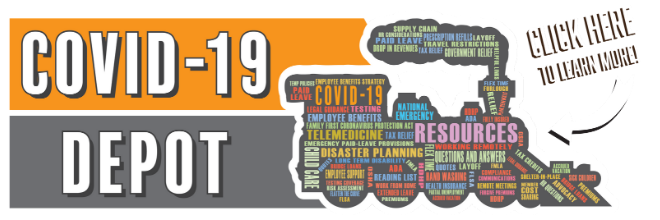The CARES Act Paycheck Protection Program Update
The Department of the Treasury (Treasury) and the Small Business Administration (SBA) issued frequently asked questions (FAQs) on the Paycheck Protection Program (PPP) established under the Coronavirus Aid, Relief and Economic Security Act (CARES Act). The PPP provides small employers with an incentive to keep workers on their payroll during the COVID-19 crisis. Under the PPP, which is an extension of the SBA Section 7(a) loan program, qualifying small businesses are eligible to borrow up to $10 million in order to maintain their workforce from February 15, 2020, until June 30, 2020. All or a portion of the loan may be forgiven if the borrower follows the SBA guidelines. The FAQs provide much-needed guidance to businesses and individuals by clarifying several of the PPP requirements that lacked specificity due to the understandable rush to enact the CARES Act and the rapid issuance of the SBA’s interim final regulations on April 3, 2020. The following highlights several of the issues discussed in the FAQs.
Small Business Eligibility
The SBA clarified that program eligibility is not limited to small businesses with fewer than 500 employees. Instead, small businesses with more than 500 employees are eligible to participate, as long as they satisfy the existing statutory and regulatory definition of a “small business concern” under Section 3 of the Small Business Act, 15 U.S.C. 632, which imposes size standards for different industries. Additionally, a business can qualify for the PPP as a small business concern if it meets both of the following tests in the SBA’s “alternative size standard” as of March 27, 2020: (1) the maximum tangible net worth of the business is not more than $15 million, and (2) the average net income after federal income taxes (excluding any carry-over losses) of the business for the two full fiscal years before the date of the application is not more than $5 million.
SBA Affiliation Rules
The SBA size regulations are used to determine whether an organization is eligible for participation in the SBA’s programs. The rules require that an organization’s affiliates be included in determining whether the business has 500 or fewer employees. Affiliation exists when one business controls or has the power to control another or when a third party (or parties) controls or has the power to control both businesses. Under the rules, control may arise through ownership, management, or other relationships or interactions between the parties. The FAQs provide that the affiliation rules do apply under the PPP but that lenders are not required to make an independent determination regarding applicability of the SBA affiliation rules under 13 C.F.R. 121.301(f). Instead, it is the responsibility of the borrower to determine which entities (if any) are its affiliates and determine the employee headcount of the borrower and its affiliates. Lenders are permitted to rely on borrowers’ certifications.
Payroll Substantiation Requirements
The maximum loan amount under the PPP is equal to the employer’s average monthly payroll cost during the one-year period prior to the date the loan was made, and then multiplied by 2.5. The FAQ provides that the lender is not required to replicate all of the borrower’s calculations but may rely upon the borrower’s attestation of the accuracy of the calculations. The guidance further indicates that lenders are expected to perform a good faith review, in reasonable time, of the borrower’s calculations and supporting documents concerning average monthly payroll cost. Further, if the lender identifies errors in the borrower’s calculation or material lack of substantiation in the borrower’s supporting documentation, the lender is encouraged to work with the borrower to remedy the issue. The documentation that several financial institutions are requiring includes business and sole proprietor tax returns, quarterly payroll reports, reports prepared by third party payroll processors and any other information that supports the applicant’s requested loan amount.
Definition of Payroll Costs
Under the PPP, eligible employers may borrow an amount calculated from the employer’s average monthly payroll cost. The CARES Act limits the amount of compensation that may be included in the calculation to $100,000 per employee. The FAQs clarify that the exclusion of compensation in excess of $100,000 annually applies only to cash compensation and not to non-cash benefits, including employer contributions to defined-benefit or defined-contribution retirement plans, payment for the provision of employee benefits consisting of group health care coverage, including insurance premiums and payment of state and local taxes assessed on compensation of employees. Accordingly, benefits costs that cause the total payroll to exceed $100,000 per employee may be included when determining the applicant’s maximum loan amount.
Payroll Calculation Time Period
The SBA indicated that an applicant may determine the number of employees and payroll by using a 12-month look-back period or by using the information from calendar year 2019. For seasonal businesses, the applicant may use average monthly payroll for the period between February 15, 2019, or March 1, 2019, and June 30, 2019. An applicant that was not in business from February 15, 2019 to June 30, 2019, may use the average monthly payroll costs for the period January 1, 2020, through February 29, 2020. The SBA stated that borrowers may use their average employment over the same time periods to determine their number of employees, for the purposes of applying an employee-based size standard. Alternatively, borrowers may elect to use the SBA’s usual calculation: the average number of employees per pay period in the 12 completed calendar months prior to the date of the loan application (or the average number of employees for each of the pay periods that the business has been operational, if it has not been operational for 12 months).
Seasonal Employer Eligibility
The FAQs addressed whether a seasonal borrower whose business activity increases from April to June is eligible for the PPP, in light of the fact that the business was not operating at full capacity on February 15, 2020. In response, the SBA indicated that a lender may consider whether a seasonal borrower was in operation on February 15, 2020, or for an eight-week period between February 15, 2019, and June 30, 2019, which would fall within the seasonal borrower’s period of full operation.
Leased Employee Payroll
The FAQs addressed whether amounts paid to leased employees through a third-party payer such as a payroll provider or a professional employer organization (PEO) in order to process payroll and report payroll taxes constitutes PPP loan payroll documentation. This is important both for determining the amount of the borrower’s maximum loan amount and for documenting how loan proceeds are used for a loan made between February 15, 2020, and June 30, 2020, for loan forgiveness purposes.
Under the FAQs, the SBA recognized that eligible borrowers may use PEOs or similar payroll providers and that documentation provided by the payroll provider will indicate the amount of wages and payroll taxes reported to the IRS by the payroll provider for the borrower’s employees. Accordingly, that information is considered to be acceptable PPP loan payroll documentation. The SBA indicated that relevant information from a Schedule R (Form 941), Allocation Schedule for Aggregate Form 941 Filers, attached to the PEO’s or other payroll provider’s Form 941, Employer’s Quarterly Federal Tax Return, should be used if it is available; otherwise, the eligible borrower should obtain a statement from the payroll provider documenting the amount of wages and payroll taxes. In addition, employees of the eligible borrower will not be considered employees of the eligible borrower’s payroll provider or PEO.
PPP Loans and Sick Leave
The FAQs confirmed that PPP loans may be used during the eight-week period beginning February 15, 2020, and ending June 30, 2020, in order to cover paid sick leave. However, the CARES Act excludes qualified sick and family leave wages for which a credit is allowed under Sections 7001 and 7003 of the Families First Coronavirus Response Act (FFCRA). For this reason, the PPP loan cannot be used to cover the employer’s expense for paid sick and childcare leave under the FFCRA for which the employer is granted a 100% tax credit to cover the expense.
Independent Contractor Payments
The SBA confirmed, consistent with the final interim regulations, that an applicant’s payments to an independent contractor should not be included in calculation of the eligible borrower’s payroll costs. Only employee costs, including leased employee costs, are to be included. However, an independent contractor or sole proprietor is itself eligible to apply for a loan under the PPP if the individual satisfies the applicable requirements.
Accounting for Federal Taxes
The FAQs addressed the method borrowers must use in order to account for federal taxes when determining payroll costs for maximum loan determination and for the allowable uses for PPP loan proceeds. The SBA clarified that payroll costs are calculated on a gross basis without regard to (i.e., not including subtractions or additions based on) federal taxes imposed or withheld, such as the employee’s and employer’s share of Federal Insurance Contributions Act (FICA) tax and income taxes required to be withheld from employees. As a result, payroll costs are not reduced by taxes imposed on an employee and required to be withheld by the employer, but payroll costs do not include the employer’s share of payroll tax.
Example: An employee who earned $4,000 per month in gross wages, from which $500 in federal taxes was withheld, would count as $4,000 in payroll costs. The employee would receive $3,500, and $500 would be paid to the federal government. However, the employer-side federal payroll taxes imposed on the $4,000 in wages are excluded from payroll costs.
The SBA indicated that the definition of “payroll costs” in the CARES Act, 15 U.S.C. 636(a)(36)(A)(viii), excludes “taxes imposed or withheld under chapters 21, 22, or 24 of the Internal Revenue Code of 1986 during the covered period,” defined as February 15, 2020, to June 30, 2020. The SBA interprets this statutory exclusion to mean that payroll costs are calculated on a gross basis, without subtracting federal taxes that are imposed on the employee or withheld from employee wages. Unlike employer-side payroll taxes, such employee-side taxes are ordinarily expressed as a reduction in employee take-home pay; their exclusion from the definition of payroll costs means payroll costs should not be reduced based on taxes imposed on the employee or withheld from employee wages.
PPP Applications Prior to SBA Guidance
The SBA recognizes that several individuals applied for PPP loans on April 3, 2020, the date the program opened and prior to the SBA’s issuance of interim final regulations and the FAQs. Notwithstanding all of the clarifications that have been made after the program opened, the SBA indicated that borrowers do not need to take any action based upon the updated guidance. Instead, borrowers and lenders may rely on the laws, rules, and guidance available at the time of the relevant application. However, previously submitted loan applications that have not yet been processed may be revised based upon the clarifications in the FAQs.
Loan Forgiveness Period
The amount of forgiveness of a PPP loan depends on the borrower’s payroll costs over an eight-week period. The SBA clarified that the eight-week period begins on the date the lender makes the first disbursement of the PPP loan to the borrower, which is no later than ten days after loan approval.
4/13/2020



